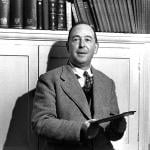 Many years ago, so long ago the VCR had not yet been invented, there was an eccentric movie called Star Wars that became a bit of a hit. The setting for the movie was a remote desert planet where an isolated moisture farmer and his family lived quite happily and peaceably with little contact with the outside world except what was needed to get blue milk. All of that changed one day when someone flying high overhead dropped two robots to the planet, which fell to earth and were discovered by the Jawa. These strange robots created quite a stir when the farmer purchased them and his young ward discovered that one “‘droid” had a message about a mysterious man named Obiwan Kenobi about whom it was claimed : “you’re our only hope.” The lad had never seen a such a message before and had no idea where it came from, who Obiwan might be, or how to use the droids to find out.
Many years ago, so long ago the VCR had not yet been invented, there was an eccentric movie called Star Wars that became a bit of a hit. The setting for the movie was a remote desert planet where an isolated moisture farmer and his family lived quite happily and peaceably with little contact with the outside world except what was needed to get blue milk. All of that changed one day when someone flying high overhead dropped two robots to the planet, which fell to earth and were discovered by the Jawa. These strange robots created quite a stir when the farmer purchased them and his young ward discovered that one “‘droid” had a message about a mysterious man named Obiwan Kenobi about whom it was claimed : “you’re our only hope.” The lad had never seen a such a message before and had no idea where it came from, who Obiwan might be, or how to use the droids to find out.
The Bible is kind of like that android that fell out of the sky, only it does not speak to us in beeps, cannot fly, and has no interface for communication with the Death Star. In fact, almost the only way this analogy works is that since the Bible showed up, there has been a big debate about where it came from, why it is here, and what we should do with it; just as we have done with the Star Wars canon. Safe to say: it is our only hope.
Perhaps you, someone you know, or a person you met at a Star Wars convention has had the following questions: How did we get the Bible? Can we be sure that our Bible today is the same as what God inspired to be written? Why did we spend so much time talking about a movie when we meant to talk about the Bible? Will we get back to Star Wars at any point in this article?
As we answer these questions we should recall this sage advice: “Don’t get cocky, kid.”
Here’s the fascinating story of how the Bible got from God to us and how this process is a bit like R2D2 and that moment Luke found him on Tatooine.
Many volumes have been written to explain the miraculous and fascinating process necessary for the Bible’s existence, so many that if I borrow from one, I have a decent chance of getting by with it. To summarize, I’ll explain the three-step process that has occurred for you to read the Bible and relate each step to R2D2:
Revelation
Transmission
Translation
The story of how the Bible got to us from God is a captivating one, and it begins with revelation.
Revelation
Revelation is the moment when Luke realized that R2D2 contained a message from a beautiful princess. It is the pivot point in any film where the McGuffin or the quest unfolds for us. Imagine a shepherd, let’s call him Amos, having something revealed to him, like Luke with the hologram princess, and writing it down instead of wandering out in the desert to get attacked by sand people.
This original copy of the book is called the autograph and unlike George Lucas, God left his work alone. David shot first and God did not change the story! That’s one good reason Disney will never take the franchise from the primary author as they had to with Star Wars.
Until very recently, it has been hard for fans to get a copy of the original version of Star Wars. We had to piece together elements from old VCR copies boot legged to You-Tube and make do. This is a tiny bit like what scholars do with copies of Bible books. By comparing ancient manuscripts, we (by which I do not actually mean me, since I have not competency in that highly specialized field) find that the vast majority of the variations between them are minor elements of spelling (ancient people had no spell check in their word processors), grammar (really, who needs it?) or accidental omissions or duplications of words or phrases.
We know what the original manuscript said, more or less, just as we know what the effects looked like in the non-digitally enhanced Star Wars, more or less. Just as we can remove the horrible digital effects pasted in later, so scholars can get rid of copyist errors. The process is similar: we know what does not fit and looks like later additions by hacks.
Remarkably, if we were to lose Star Wars tomorrow, there are plenty of fans who could quote the entire film from memory. Put a group of those fans together and we could reconstruct the script. This is sort of like the Scripture quoted in the works of the early Christian writers (mostly AD 95–150 since that is when early Christians lived). This fan service by less talented Christian writers is so extensive that virtually the entire New Testament (except for eleven verses) can be reconstructed from quotations alone. Not surprisingly the missing passages are mostly from 2 and 3 John, which sometimes feel like padding to lesser Bible fans, not unlike the long hallway sequences on the Death Star.
You do not have to find a VCR to see the original Star Wars and you do not have to go get a Dead Sea scroll fragment to recover the original text. Fan pressure forced the studio to give us the original and scholarship has done the hard work of putting the text together for us.
Free markets rule.
Transmission
How can we see Star Wars? The studio made the film, we paid our shekels to get ducats, sat and (at that time) watched the film (made of film) project over our heads to a screen. That is called transmission. Lucas made the film, but we had to be able to see the thing and that required transmitting it to us. God and his crew wrote the Bible, but we needed to get the text through transmission.
When you hear “transmission” don’t think communicable diseases like the flu, but careful copying of the text. Transmission occurred first by careful copyists. Later we invented the copy machine and then Kindle and so this got easier.
This was not the bad sort of copying that happens when people take other peoples work and pass it off as their own. This was copying in order to transmit the message. If a monk named Swithun had copied the Gospel according to John and called it the Gospel according to Swithun, then that is plagiarism and very bad. If Swithun copied the Gospel and gave credit to Saint John and the Holy Spirit, then that is very good.
I hope that this is clear: transmission without accrediting is plagiarism, transmission with accreditation made Xerox rich.
When the Bothans transmitted the Death Star to the rebellion, they did not claim to have built the Death Star. They were transmitting without plagiarism. Be like the Bothans.
Tragically, opponents of Star Wars have attacked its reputation by producing bad novelizations of the films. These are not canon and they harm the franchise by diluting the brand. In the same way, some apologists take a popularization of complicated arguments and simplify them further. At some point, these apologists have diluted the brand as they fail to catch the nuances of the argument.
For example, the fact that we havea land fill worth of Atari ET games does not mean it was a good game. It means it was a very bad game: nobody played it so copies were trashed and so (oddly) preserved. In the same way, nobody should take manuscript traditions and reduce them to mere numbers. That would be absurd.
At the end of Star Wars (the first film), we thought we understood. In the same way, at the end of the Old Testament, we might think we get it, but the sequel was coming. Luke is not going to marry Leia (thank God) despite what we thought before we saw the rest. Saint Luke showed us that God was not satisfied with transmitting His message, so He came Himself.
So it goes.
—�—�—�—�—�—�—�—�
Obviously this is a parody of bad apologetics. Read the original here. This parody makes the point that changing some words does not prevent plagiarism nor borrowing -or paying- for someone else’s research make you scholar.
Read about the citation problems in Mark Driscoll’s present work here. I have offered to dialog with him on this problem here. The original cited “scholars” who for some reason think Plato wrote a book called Tetralogies. In fact, you can organize Plato’s work into Tetralogies, some people do, others do not. In any case, you cannot date “Tetralogies” as Driscoll claims.
It is not ethical to fail to cite sources or to plagiarize.











